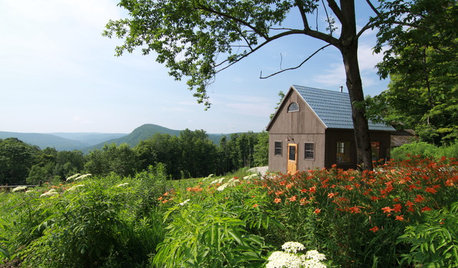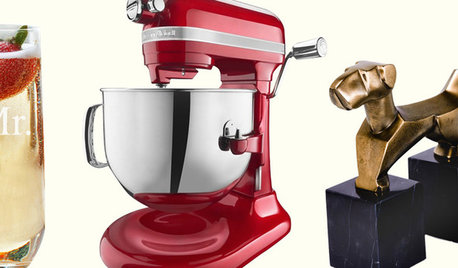new composter a couple quick questions :)
Matthebrute
12 years ago
Related Stories

MODERN ARCHITECTUREHouzz TV: This Amazing Lake House Made a Couple’s Dream Come True
Step inside a dream home on Lake Austin, where architecture celebrating gorgeous views has a striking beauty of its own
Full Story
CABINSRoom of the Day: Timber-Frame Cabin Inspires Couple’s Creative Pursuits
This work studio, built in a simple vernacular architectural style, sits near a couple's rural home in the Berkshire mountains
Full Story
INSIDE HOUZZSee a Couple’s New Spa-Like Bathroom From Lowe’s and Houzz
The sweepstake winners’ master bathroom gets a makeover with a new shower, tile and storage space
Full Story
GARDENING GUIDESGet on a Composting Kick (Hello, Free Fertilizer!)
Quit shelling out for pricey substitutes that aren’t even as good. Here’s how to give your soil the best while lightening your trash load
Full Story
CONTAINER GARDENS3 Steps to Creating Quick, Easy and Colorful Succulent Containers
Take a bright container, add a colorful succulent or two and have a professional, summery design in minutes
Full Story
GARDENING FOR BUTTERFLIESA Quick-Start Guide to Bird-Watching for Fun and Learning
Set out some seed and grab your field guide. Bird-watching is an easy, entertaining and educational activity for the whole family
Full Story
HOUSEKEEPINGThe Quick and Easy Way to Clean a Microwave
All you need is water and a couple of other natural ingredients to get your appliance sparkling and smelling fresh again
Full Story
DECORATING GUIDESHouzz Tour: Couple Pares Down and Pumps Up the Style
A big transition from a large suburban house to a 1,200-square-foot urban condo is eased by good design
Full Story
LIFEWhen Your Tastes Clash: How to Design and Decorate as a Couple
Want to keep the peace? Work with both of your styles when remodeling, decorating or building new, for a home that feels right to all
Full Story
SHOP HOUZZHouzz Products: Great Wedding Gifts for Modern Couples
Give newlyweds a gift as memorable as the day itself, to have and to hold in a special place at home
Full StoryMore Discussions






sbryce_gw
MatthebruteOriginal Author
Related Professionals
Danbury Landscape Architects & Landscape Designers · Surprise Landscape Contractors · Avocado Heights Landscape Contractors · Duarte Landscape Contractors · Laguna Hills Landscape Contractors · Mequon Landscape Contractors · New Brighton Landscape Contractors · Saint Paul Landscape Contractors · Watertown Landscape Contractors · West Haverstraw Landscape Contractors · Immokalee Stone, Pavers & Concrete · El Sobrante General Contractors · Linton Hall General Contractors · Overlea General Contractors · Rossmoor General Contractorsrookie09
patrick1969
11otis
patrick1969
morgan_3